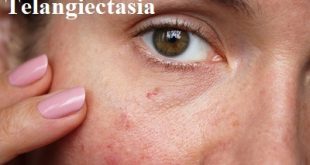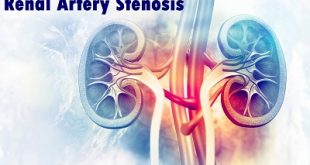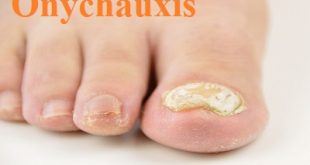What is telangiectasia? Telangiectasia (commonly known as “spider veins”) are dilated or broken blood vessels located near the surface of the skin or mucous membranes. They often appear as fine pink or red lines, which temporarily whiten when pressed. “Matted” telangiectasias are clusters of these small dilated blood vessels that …
Read More »Dystonia – Types, Risk factors, Causes and Treatment
Understanding Dystonia Dystonia is a neurological disorder that causes excessive, involuntary muscle contractions. These muscle contractions result in abnormal muscle movements and body postures, making it difficult for individuals to control their movements. The movements and postures may be painful. Dystonic movements are typically patterned and repetitive. It can affect …
Read More »Renal Artery Stenosis (RAS) – Pathophysiology, Risk factors and Causes
Definition Renal artery stenosis (RAS, sometimes also called renal artery disease or kidney stenosis) occurs when the two main vessels that deliver blood to the kidneys become stiff or narrowed due to vascular disease. RAS is a type of atherosclerosis or hardening of the arteries, which occurs when fatty cholesterol …
Read More »Anosmia – Types, Causes, Treatment, and Prevention
Definition Anosmia is the full loss of smell. Anosmia can be a temporary or permanent condition. You can partially or completely lose your sense of smell when the mucus membranes in your nose are irritated or obstructed such as when you have a severe cold or a sinus infection, for …
Read More »Hypogonadism – Types, Causes, Symptoms, and Treatment.
Overview Hypogonadism is a condition that causes decreased function of the gonads, which are the testes in males and the ovaries in females, and decreased production of sex hormones. You may be born with the condition or it can develop later in life from injury or infection. Some types of …
Read More »Onycholysis – Pathophysiology, Risk Factors, and Prevention.
What is Onycholysis? Onycholysis refers to the physical sign of separation of the nail plate from the nail bed. Because of this separation, the portion of the nail plate that is not attached appears white. A greenish discoloration can sometimes be seen in onycholysis, and can represent concomitant Pseudomonas infection. …
Read More »Onychauxis – Overview, Symptoms, and Prevention.
Overview Onychauxis is a nail condition that presents thickened nails without structural deformity. It is also known as nail hypertrophy or hypertrophic nails. Onychauxis is more prevalent in the elderly people and can occur in either, toenails or fingernails. Many times, in fact, onychauxis is a natural part of aging. …
Read More »Ingrown Toenail – Causes, Risk Factors, and Treatment.
What is Ingrown Toenail? An ingrown toenail (onychocryptosis) is caused by the pressure from the ingrowth of the nail edge into the skin of the toe. Once the edge of the nail breaks through the skin, it produces inflammation. Initially presenting as a minor discomfort, it may progress into an …
Read More » Diseases Treatments Dictionary This is complete solution to read all diseases treatments Which covers Prevention, Causes, Symptoms, Medical Terms, Drugs, Prescription, Natural Remedies with cures and Treatments. Most of the common diseases were listed in names, split with categories.
Diseases Treatments Dictionary This is complete solution to read all diseases treatments Which covers Prevention, Causes, Symptoms, Medical Terms, Drugs, Prescription, Natural Remedies with cures and Treatments. Most of the common diseases were listed in names, split with categories.








